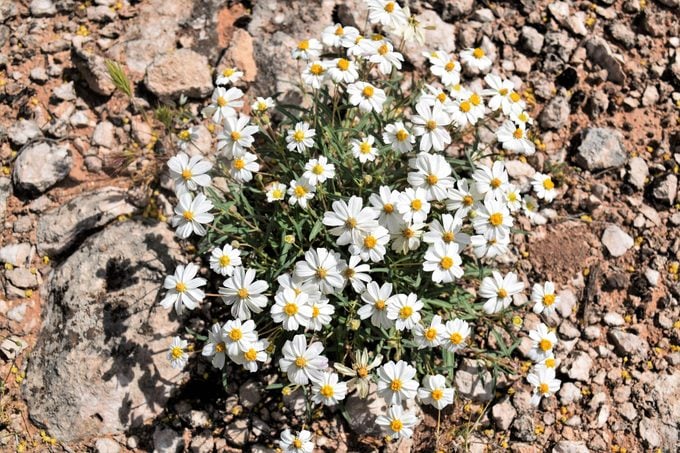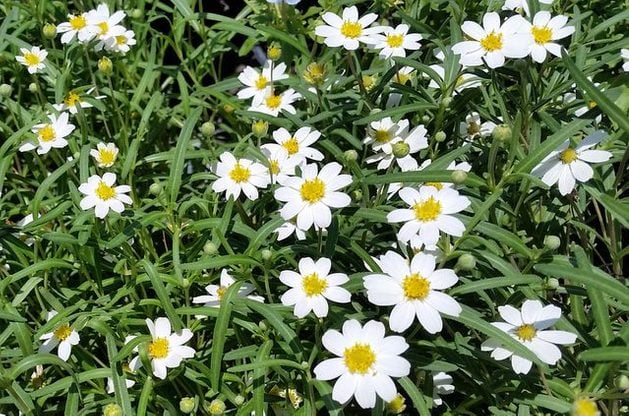Drought-Tolerant Blackfoot Daisy Can Take the Heat
Updated: Dec. 21, 2022
Native to the southwest, blackfoot daisy loves hot, dry conditions. Grow this gorgeous flower in the sunniest spot you have and watch it thrive.

The cheerful heads of daisies are perennial favorites in the garden. There’s something so happy about the simple white flowers with bright yellow centers. The blooms of blackfoot daisy are no exception. They’re small, only about the size of a quarter, and they star the blades of green foliage in such large numbers that they often cover it completely. The honey-scented blooms last all summer and well into fall, making them an excellent late-season nectar plant. Blackfoot daisy is a wildflower native to the southwest, and anyone with sunny, well-drained soil (even in containers) can grow this beauty. Here’s what you need to know about blackfoot daisy.
P.S. Here’s how you can still have attractive landscaping with fire resistant plants.

How to Grow Blackfoot Daisy
- Latin name: Melampodium leucanthum)
- Type: Perennial
- Growing Zones: USDA 5 – 10
- Size: Low-growing to about a foot in height. Individual plants may spread up to 2 ft wide.
- Native to: The American southwest, including Colorado, Texas, Arizona, New Mexico, Kansas, and Oklahoma
- Exposure: Full sun, the more the better
- Soil: Well-drained is the key. This plant doesn’t like wet feet. It also has a longer lifespan in poorer soil conditions, believe it or not. Rich soil may produce more flowers in the short term, but is likely to shorten the plant’s overall lifespan. Sandy or rocky soil is best
- Water: Minimal. Once established, blackfoot daisy only needs water a few times a month to flower well
- Flowering Times: Spring through late fall. Flowers have a mild honey scent
- Best Suited For: Xeriscaping, rock gardens, or containers in full sun
- Care: Little care is needed. In the spring, cut back hard (about 3 inches above the ground) before new growth appears. No deadheading required.
- Wildlife Value: Butterflies enjoy blackfoot daisy, as do sphinx moths, one of the primary pollinators. This makes it a great addition to a moon garden, since many sphinx moths appear in the evening.
- Other: Known to be deer-resistant and rabbit-resistant




















